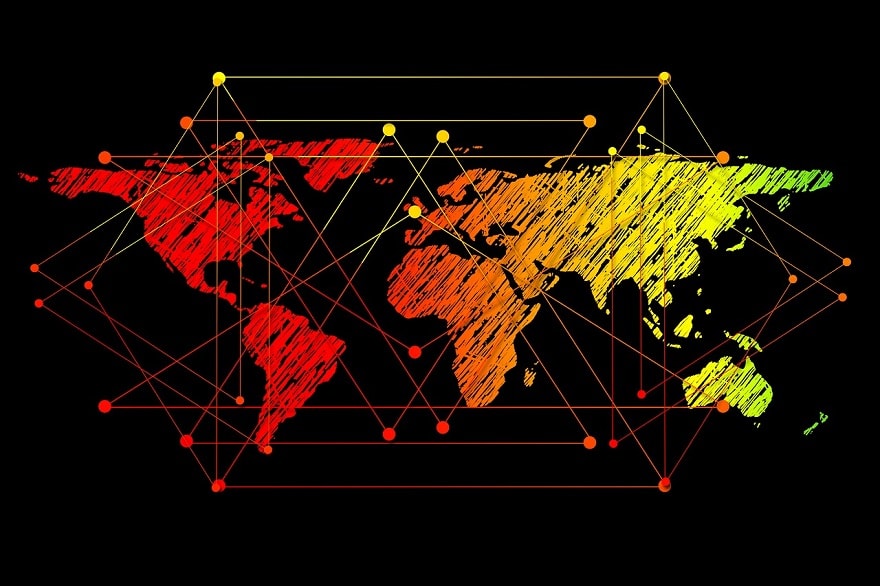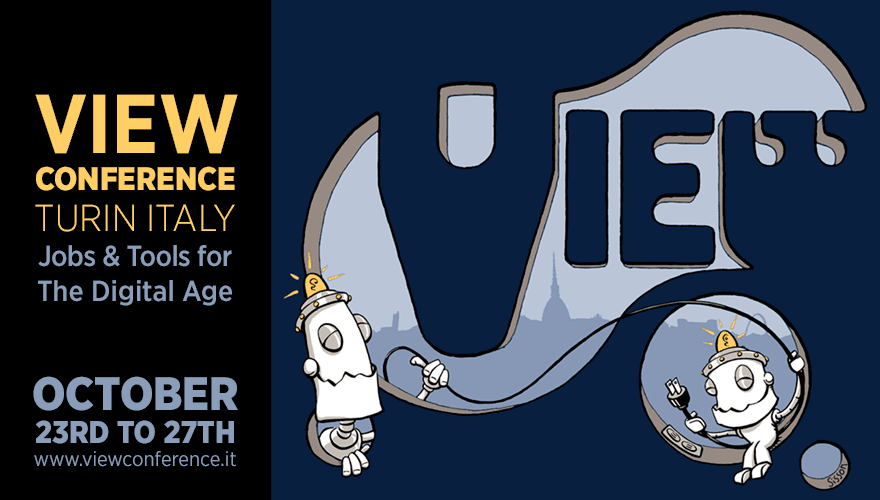Los Angeles, CA – The San Pedro International Film Festival (SPIFFest) celebrates its 6th anniversary presenting from October 5-15, 2017 in San Pedro’s historic waterfront district. SPIFFest has also announced it's moderator and panelists for its Production and Design Panel from SIGGRAPH's very own, Alex Bryant, Chelsea Roehl and Rebecca Yanis. To mark it's 6-year milestone, SPIFFest has it's expanded multimedia programming over two weekends, including music performances and latest technology innovations spotlighting virtual reality.
The Production and Design panel is scheduled on Saturday, October 14th at 12pm and will bring together top creatives and visionaries from diverse portfolios to explore an insightful discussion as how production and design applies to film and television.
Moderator: Alex Bryant. Originates from the United Kingdom, an ADDY and EMMY recipient for his contributions to television and marketing, Alex's credits spans over a variety of companies including: CBS, Entertainment Tonight, The Insider, Vanity Fair, Access Hollywood, NAACP Image Awards, NBC Universal, Esquire Network, and most recently with Dick Clark Productions. As a natural philanthropist and lifelong student, Alex continues to share his humbleness, living to the fullest, and inspiring his growing support system to Dream BIG!
Panelist: Chelsea Roehl, Graphic Designer at NBC Universal. Chelsea Roehl has origins from the great northern land of Alaska. Born and raised there her entire life, she attended the University of Alaska in Fairbanks. After receiving her Bachelors of Art with a Minor in Business this past May, Chelsea immediately packed up her bags and moved to Studio City, California as she had been hired by NBC Universal a Graphic Designer for their Creative Services Team. Now she creates online advertisements, print
ads, and other fun miscellaneous projects for the home entertainment family. Some of the movies that she had the honor of working on includes: Atomic Blonde, Get Out, The Secret Life of Pets, and the Fate of the Furious.
Panelists: Rebecca Yanis, Production Assistant at DreamWorks Animations. Rebecca Yanis is a Cum Laude graduate of Middle Tennessee State University where she majored in Animation and minored in Studio Arts. While at MTSU she was the Director of Public Relations for her SIGGRAPH chapter and was awarded the 2016 Jill Green Memorial Scholarship at the 23rd Annual Student Awards from the College of Media and Entertainment. After interning with DreamWorks’ VeggieTales she was hired on as a Production Assistant/VFX Artist. She is currently working on a new animated show at DreamWorks in Glendale, California, and recently celebrated her first year being employed by the boy on the moon. She is honored to work alongside many creative and talented individuals and is excited for the part that she will play in future animations.
Additional panelists also includes Graphic Designer Shane Crocker from Fandango and Production Manager AJ Mayers from Lionsgate.
The festival kicks off October 5th during San Pedro’s First Thursday Art Walk and continues Friday with it’s Opening Night Film Dreams I’ve Never Had directed by Iyad Hajjaj with Malcom McDowell and Robin Givens. On Sunday is Sweden’s official Oscar entry The Square (Cannes Palm d’Or winner) directed by Ruben Ostlund, and Human Flow directed by Ai Wei Wei (Venice Film Festival).
A screening of Some Kind Of Wonderful celebrating it’s 30th Anniversary, highlights local San Pedro locations will be the highlights of the weekend and horror classic Friday the 13th will screen Friday October 13th.
The second weekend continues with shorts and documentary programming, and Every Nights a Saturday Night directed by Jeff Stacy, and about Bobby Keys, saxophone player for the Rolling Stones.
October 15th SPIFFest hosts a look at Virtual Reality and its applications in cinema and entertainment, featuring a panel discussion and demo of the latestworks by some of today’s top VR innovators.
Top tier sponsors include: StayCool (Universal Toiletries, UK), the Relativity School of Los Angeles and Pappys Restaurant of San Pedro, host of the opening weekend celebratory party and VIGO, a social media content creation app.
Tickets and festival passes range from $10 to $65, there will also be some free screenings. For more information and to register for the mailing list visit www.SPIFFest.org
News

ACM's Computers in Entertainment Seeks Nominations for Editor-in-Chief
Computers in Entertainment (CiE), ACM's online-only magazine for technology applications in the entertainment industry, is about to undergo a transformation. ACM is in discussions with CMU’s Entertainment Technology Center (ETC) Press to join editorial resources and make CiE the go-to hub for this thriving field—everything from practical applications, business strategies, scholarly research, and interviews with some of the industry's leading lights.
Newton Lee has served as the Editor-in-Chief of CiE since its debut in 2003. Newton's notion of weaving a website for practical and fun entertainment information with theoretical, scholarly, peer-reviewed research papers served as an online-only journal has opened up new avenues for ACM to explore. With Newton's blessing, we are now looking to take what he has built and reimagine it for an even greater audience making greater use of social, video, blog and podcast media platforms.
The ACM Publications Board is seeking nominations for Editor-in-Chief of Computers in Entertainment. We anticipate the site will be sectioned into topics such as Games; Art + Music; TV + Movies; Society + Education; as well as the journal component.
While we expect volunteer editors to be responsible for all these key sections, it will require an Editor-in-Chief with the vision and the industry expertise (and reach) to oversee the entire magazine and help find ways to best weave all the components together into one cohesive unit. This volunteer position would require a three-year commitment, with an option to serve one more three-year term.
We have always felt that SIGGRAPH was a natural fit for CiE. If you have any suggestions for a new EiC, please send them to Diane Crawford, ACM Deputy Director/Magazine Development.

Join the GRAPHICS-WORLDWIDE Listserv
One of the initiatives in the "Grow and Develop an Active CG Community and Idea Marketplace" in the ACM SIGGRAPH Executive Committee's strategic proposal is to create a moderated Graphic listserv where you as a computer graphics professional can learn about graphics-related jobs, meetings, software, news, journals, and conferences. Please sign up and contribute your job ads and other announcements to the email list so that this email list becomes a useful resource for our community.
To sign up, go to http://listserv.siggraph.
Moderators of the listserv are:
- Alec Jacobson; Assistant Professor, Canada Research Chair in Geometry Processing; Dynamic Graphics Project, Department of Computer Science, University of Toronto
- Eakta Jain; Assistant Professor; CISE, University of Florida
- Wojciech Jarosz; Assistant Professor; Department of Computer Science, Dartmouth College

Visual Effects Society Names Keynote
Visual Effects Society Names Director/Producer/Writer Ava DuVernay
A Keynote Speaker at 2017 VES Summit
Los Angeles (SEPTEMBER 6, 2017) – Today, the Visual Effects Society (VES), the industry’s global professional honorary society, announced acclaimed director/producer/writer Ava DuVernay as a Keynote Speaker at its 9th annual Summit, “Inspiring Change: Building on 20 Years of VES Innovation.” The interactive forum on Saturday, October 28th celebrates the Society’s milestone 20th Anniversary and will bring together top creatives, executives, thought leaders and visionaries from diverse disciplines to explore the dynamic evolution of visual imagery and the VFX industry landscape in a TED Talks-like atmosphere.
Keynote Speaker: Ava DuVernay. Nominated for the Academy Award and eight Emmy Awards, winner of the BAFTA for Best Documentary and The Peabody Award, Ava DuVernay's 13TH is one of the most critically-acclaimed films of 2016. In 2015, DuVernay directed the historical drama Selma, which garnered four Golden Globe nominations and two Academy Award nominations, including Best Picture. Her current directorial work includes the award-winning dramatic television series Queen Sugar; and the upcoming Disney feature film A Wrinkle in Time.
DuVernay previously wrote, produced and directed the dramatic feature, Middle of Nowhere, which earned her the 2012 Sundance Film Festival Best Director Award. In 2010, she wrote, financed, produced and directed her first narrative feature, I Will Follow. The family drama was hailed by critic Roger Ebert as "one of the best films I've seen about the loss of a loved one." DuVernay made her directorial debut with the critically acclaimed 2008 hip hop documentary, This Is The Life and has directed several network documentaries, includingVenus Vs. for ESPN. She has directed significant short form work including August 28: A Day in the Life of a People, commissioned by The Smithsonian’s National Museum of African American History and Culture, as well as acclaimed fashion and beauty films for Prada and Apple.
In 2017, DuVernay was named one of Fortune Magazine's 50 Greatest World Leaders and TIME Magazine's 100 Most Influential People. She also distributes and amplifies the work of people of color and women directors through her film collective ARRAY, named one of Fast Company’s Most Innovative Companies.
The VES Summit will host a stellar roster of experts and provocateurs. As previously announced, these include:
- Keynote Speaker Syd Mead, acclaimed visual futurist and conceptual artist
- President of IMAX Home Entertainment Jason Brenek on Evolution in Entertainment: VR, Cinema and Beyond
- CEO of SSP Blue Hemanshu Nigam on When Hackers Attack: How Can Hollywood Fight Back?
- Head of Adobe Research Gavin Miller on Will the Future Look More Like Harry Potter or Star Trek?
- Senior Research Engineer at Autodesk Evan Atherton on The Age of Imagination
- Founder/CEO of the Emblematic Group Nonny de la Peña on Creating for Virtual, Augmented & Mixed Realities.
Additional speakers and roundtable moderators will be announced soon.
The 2017 VES Summit takes place on Saturday, October 28th at the Sofitel Hotel Beverly Hills, located at 8555 Beverly Blvd. For more information and to purchase tickets, visit https://www.
Sponsors include Rotomaker and Houdini. Media partners include Animation Magazine, The Hollywood Reporter, SHOOT Online, Variety and The Wrap.

View Conference 2017
VIEW Conference 2017 Announces Final Program
Registration Now Open for the October 23-27 Symposium in Turin, Italy
Award Entry deadline: September 15.
With more than 50 speakers confirmed for the 18th annual confab, Italy’s largest digital media conference promises to offer inspiring and practical content to artists, animators, game developers, storytellers, content creators and other students and professionals who work with computer graphics.
Six visual effects Oscar winners, two Academy Sci-Tech award winners, animated feature film directors, virtual reality pioneers, computer graphics researchers, game developers, photographers, writers, and studio executives will converge in Turin, Italy from October 23-27.
“One of the special reasons to attend VIEW is that our speakers like to stay for the entire week and attend talks given by the other speakers, so our attendees have many opportunities to interact with them,” says Conference Director Dr. Maria Elena Gutierrez. “Another reason is that I think VIEW might be the only conference at which, in addition to talks, animated film directors and Oscar-winning artists offer small, interactive workshops and master classes.”
All told, VIEW boasts 15 master classes and workshops this year including those from Director Mark Osborne (The Little Prince) and Director Kris Pearn (The Willoughbys)wh
Also unique to VIEW is the game developers bootcampand acceler
“VIEW brings together the world’s best and brightest minds across multiple disciplines, in a uniquely intimate and collaborative place where creatives can incubate and celebrate,” says Dr. Gutierrez. “I’m as proud as ever of VIEW 2017. I hope you can join the VIEW family in beautiful Torino.”
You can view the final program online at: